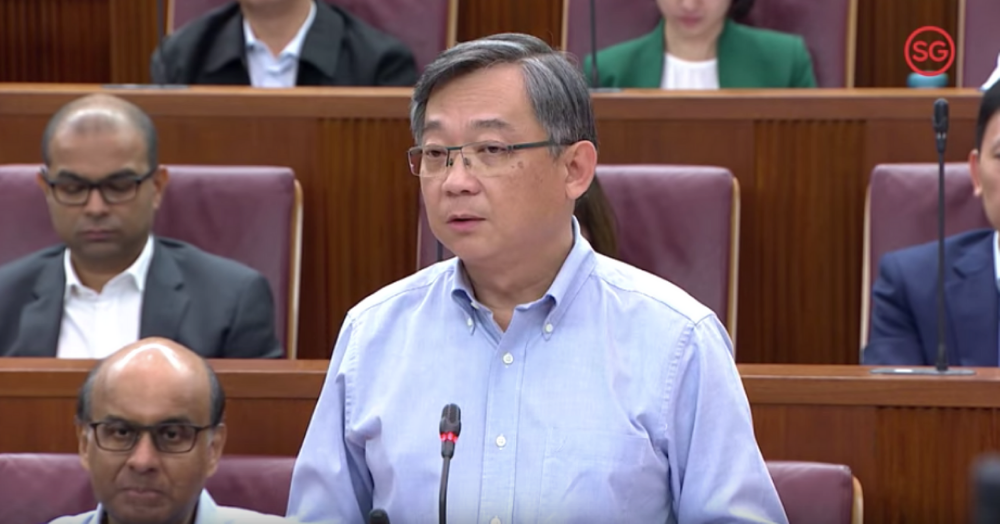Health Minister Gan Kim Yong thanked workers, businesses, and "our people" for their sacrifices during this circuit breaker period to fight Covid-19.
"But are not out of the woods yet," said Gan in his statement in Parliament on May 4.
Despite signs that Singapore's circuit breaker measures are working, Gan said, the next steps must be taken carefully.
Circuit breaker measures working, but must be careful
Singapore's number of Covid-19 cases amongst non-Work Permit holders, which the Ministry of Health (MOH) has categorised as "cases in the community", has seen a decrease, from 31 in the week before the circuit breaker to 11 last week, Gan pointed out.
Similarly, the average number of new unlinked "community cases" had reduced from 12 per day to 5 per day over the same period.
However, he added, the continued presence of unlinked cases means that there may be hidden cases in the community, which could lead to a second outbreak if we aren't careful:
"We will still need to open up in a phased and calibrated manner, to avoid a second wave of outbreak. There will likely still be cases of infection in the community, as the virus is very difficult to eradicate."
Indicators to look out for before S'pore can reopen
Worker's Party Member of Parliament (MP) Sylvia Lim asked what metrics the government will look at when considering the lifting of the circuit breaker measures.
Gan gave three indicators:
- Low numbers
- Assessment of the global situation
- System to open safely
First, he said, community transmission of the virus should be stemmed or very low, ideally falling to zero or single-digit cases every day, and very low numbers of unlinked cases for a period of time.
The number of cases amongst migrant workers needs to also see a decrease, he added.
If not, Gan said, "we will continue to be at risk of a spillover from the dormitories into the wider population."
Secondly, he stated, Singapore needs to assess the global situation as well as the situation in other countries, in order to inform the extent to which and the approach to reopening the country's borders.
Gan added that the re-opening of borders will likely begin "small and selectively", involving a mix of isolation and test requirements in order to prevent further imported cases which could lead to community spread.
Thirdly, Gan said, Singapore must put in place a system that would allow for opening safely, since allowing more businesses to operate and social activities to resume would result in more interactions and higher risk of transmission.
"Therefore," he explained, "we need to step up our capability and capacity to test and detect cases early, contact trace quickly, ringfence close contacts promptly."
Increase in testing capacity
To date, Gan said, Singapore has one of the highest testing rates for Covid-19 in the world. We have conducted over 140,000 tests for Covid-19, which amounts to 2,500 tests per hundred thousand people.
"But we plan to do more," Gan added, "and will continue to expand our testing capacity, and to strategically deploy them to yield the greatest impact."
While there have been some suggestions to do asymptomatic testing for the entire population in Singapore, Gan explained that since there is "no widespread community transmission", the results from asymptomatic testing would not yield much, if done indiscriminately.
Instead, asymptomatic testing is being conducted selectively for priority groups, such as asymptomatic young children in the same household as Covid-19 patients and staff and residents at nursing homes and welfare homes.
Gan added that as more businesses reopen, the government may conduct more tests on essential service workers, and that testing may also be done at the country's borders to reduce the risk of local transmission from imported cases.
Top image via gov.sg.
If you like what you read, follow us on Facebook, Instagram, Twitter and Telegram to get the latest updates.
